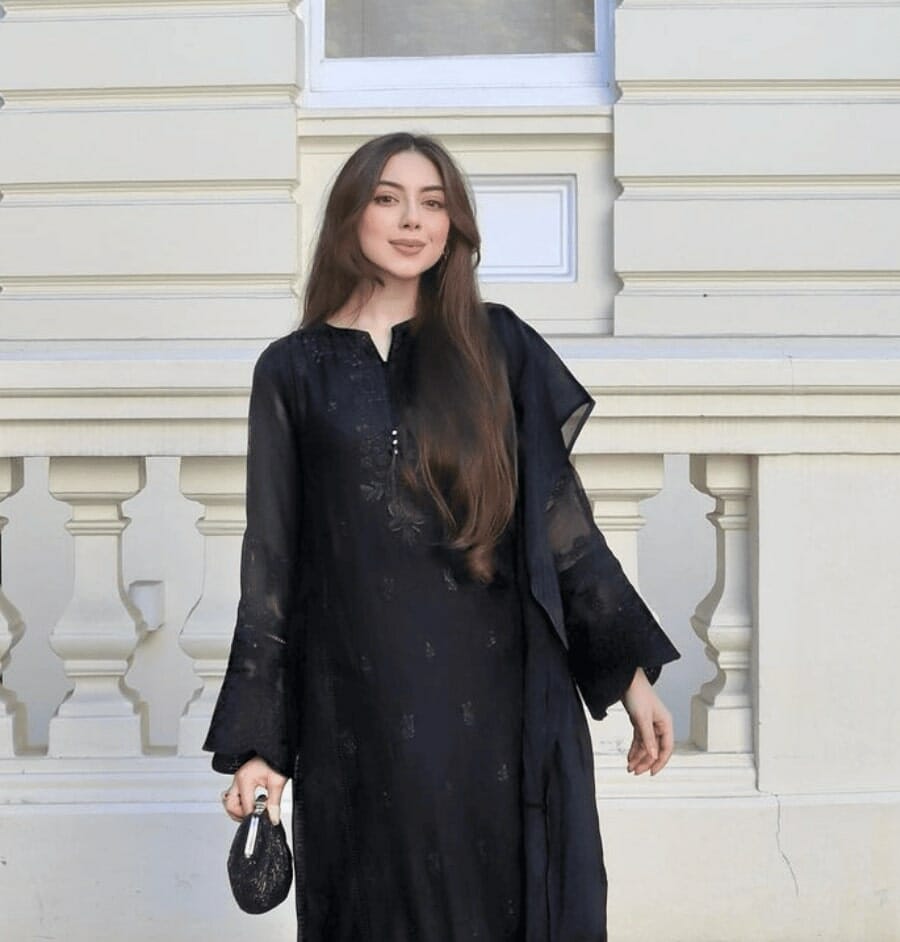Filipino Brides: a Guide to Finding a Wife from the Philippines

Are you struggling with the vast array of dating platforms, unsure of which ones are trustworthy? Do the cultural differences feel overwhelming, or perhaps you’re worried about making a good impression when you meet her family? Maybe you’re even on the verge of bringing your Filipino bride home and find yourself unprepared for the immigration process and her transition to life in the US.
Find Foreign Women Online
You’ve come to the right place. This comprehensive guide will help you understand the essence of a modern Filipino bride, find genuine connections, overcome challenges, and set realistic expectations for marriage. We’ll take you through the entire process, from the first online hello to the final step of helping your wife adjust after moving to the U.S.
Whether you’re at the early stage of finding a potential bride or preparing for a traditional Filipino wedding, this article will provide you with the insights you need to make informed decisions. Armed with this knowledge, you can navigate the intricacies of the Filipino dating scene, understand the cultural nuances of marrying a Filipino woman, and support your bride through the transition of relocating to a new country. From understanding the costs involved in marrying a Filipino bride to the logistics of registration in the Philippines, we’ve got you covered.
Embark on this journey with us, apply the advice, and you’ll find that the transition to married life with your Filipino bride can be smoother than you ever imagined. Let’s begin this journey to a fulfilling cross-cultural marriage.

Meet Foreign Women Online in 2025
| 1 |
|
||
| 2 |
|
||
| 3 |
|
Understanding a Modern Filipino Mail-Order Bride’s Essence
Unraveling the truth about modern Filipino mail-order brides can seem complex, yet who better to reveal this truth than the brides themselves? We’ve spoken with three Asian women who, for various reasons, have navigated the international marriage route. Each, through their unique journey and perspective, illustrates what it means to be a Filipino bride in the modern world.
Question: “Can you help us understand the term ‘mail-order bride’ and share your experience with it?”
Response from Maria Santos, 28, a single woman from Manila, Philippines:
“Hello, I’m Maria, a pharmacist from Manila. When you hear ‘mail-order bride’, it may sound old-fashioned, even offensive, as if you could buy us from a catalog. But nowadays, it simply means we’re looking for love online, and I’ve been on SakuraDate for about 7 months. It’s legal, trusted, and it opens up a world of opportunities for cross-cultural relationships. I chose this path to broaden my horizons, and I love the excitement of meeting people from different cultures. However, be aware of scams. Always verify profiles and avoid sharing sensitive information until trust is established.”
— Maria Santos, a Filipino mail-order bride seeking a potential husband through online dating services.
Question: “Could you debunk some stereotypes about Filipino mail-order brides?”
Response from Lily Nguyen, 33, a married woman and a nurse, from Davao City, Philippines:
“Hi, I’m Lily, married for 5 years with two wonderful kids. My husband and I met on a dating site called SakuraDate. Stereotype number one: We’re desperate or poor. Not true. I was a nurse back in Davao and I still am here in the U.S. Number two: We’re submissive. Well, ask my husband! We’re strong, intelligent women. Filipino brides are caring, family-oriented, and value relationships deeply. Many of us seek foreign husbands due to social pressures and a desire for stability, among other reasons.”
— Lily Nguyen, a successfully married Filipino mail-order wife.
Question: “What should men know when engaging with Filipino brides online?”
Response from Ana dela Cruz, 35, a married woman from Cebu City, Philippines:
“Hello, I’m Ana, a proud mother of two and a former teacher, now settled in the U.S. A potential husband should be understanding, respectful, and patient. We appreciate genuine intentions. On your profile, choose a picture that represents you well, and when describing yourself, be honest and express your interest in our culture. When messaging, remember, first impressions last! I remember my husband’s first message. It was kind, respectful, and he mentioned a local festival in Cebu City, which showed his interest in my culture.”
— Ana dela Cruz, a Filipino mail-order wife who met her husband on the online dating service.

Finding and Establishing Connection with a Filipino Bride
To secure a future with a Filipino bride, it’s important to understand the unique aspects of international dating. We are exploring the process of finding a Filipino bride, unraveling the mysteries of cross-cultural relationships, and sharing methods to meet your potential partner.
Traveling for Courtship to the Philippines (Meeting a Filipina Bride in Person)
Visiting the Philippines for courtship is a traditional and immersive way to meet Filipino women. By directly experiencing the Filipino culture and society, a man can form meaningful connections with potential brides. This method provides a firsthand glimpse into the daily life, traditions, and values of Filipino women.
In the Philippines, the most conducive cities for meeting potential brides could be Manila, Cebu, and Davao, offering a mix of urban sophistication and traditional values. The ideal time to visit would be between November and February when the weather is cooler and conducive to exploration.
The cost breakdown for a two-week trip to the Philippines might look like this:
- Round-trip flight: $800 – $1,200
- Accommodation: $30 – $150 per night
- Food and beverages: $15 – $50 per day
- Local transportation: $10 – $30 per day
- Entertainment and leisure: $20 – $100 per day
Based on these ranges, a two-week trip may cost between $2,350 and $4,460.
Advantages and Disadvantages of Traveling for Courtship:
Advantages:
- Direct interaction with potential brides
- Firsthand experience of Filipino culture
- Ability to visit a woman’s family and hometown
Disadvantages:
- Higher cost compared to online methods
- Time-consuming
- Language and cultural barriers
Contacting a Marriage Agency (Choosing a Filipino Bride From the Bride Catalogs)
Marriage agencies offer professional matchmaking services. They streamline the process of international dating by connecting men with Filipino women interested in marriage. The agency handles everything from introducing potential partners to arranging in-person meetings.
Advantages and Disadvantages of Contacting a Marriage Agency:
Advantages:
- Access to a vetted pool of potential brides
- Professional matchmaking and relationship advice
- Facilitates legal aspects of international marriage
Disadvantages:
- High service costs, usually around $2,000 – $10,000
- Potential risk of scams or fraudulent agencies
- Limited control over the selection of potential brides
Using Filipino Dating Sites (Finding a Filipino Mail Order Bride Online)
Online dating sites have revolutionized international dating, offering an accessible and effective platform for meeting Filipino brides. They have grown in popularity due to their convenience and extensive user base. Statistics show a rise in successful cross-cultural marriages resulting from online dating, making it a reliable option.
Advantages and Disadvantages of Using Filipino Dating Sites:
Advantages:
- Affordable, with costs often around $30 – $50 per month
- Wide selection of potential brides
- Convenient and accessible from anywhere
Disadvantages:
- Risk of encountering fake profiles or scams
- Lack of physical interaction may limit bonding
- Possible language and communication barriers
In terms of usage statistics, online dating has grown significantly in popularity, with a recent survey indicating 60% of men searching for a Filipina bride used online Filipino dating services, while 25% opted for marriage agencies, and only 15% chose to travel for courtship. These trends reveal a shift towards digital platforms in the search for a Filipino bride, highlighting their efficiency and accessibility.
Top Filipino Dating Sites to Meet a Wife from the Philippines in 2025
Overcoming Challenges in Cross-Cultural Relationships with a Filipino Bride
Navigating the pathway of international romance entails a deep understanding of cultural differences, effective communication, and adaptability. As the journey progresses towards meeting your prospective Filipino bride, several challenges may arise stemming from the cross-cultural dynamic of the relationship. Here are some common issues and solutions:
- Understanding Cultural Differences. Filipino culture has its own distinct nuances, values, and traditions, which may be unfamiliar to a Western man. For instance, Filipino society is known for its strong family ties, and often decisions are influenced by familial considerations. Misunderstanding these dynamics can lead to conflicts. However, gaining a deep understanding of these cultural norms is pivotal in building mutual respect and bridging any cultural divide. Researching about Filipino culture, engaging in open conversations about cultural expectations with your partner, and showing an appreciation for Filipino traditions can help foster a stronger connection.
- Navigating the Language Barrier. While English is widely spoken in the Philippines, there could still be some language-related challenges. Filipino idioms or nuances might be difficult to understand, leading to miscommunication. Fluent communication is a pillar of a successful relationship. To overcome this, you could consider learning basic Filipino phrases or use language learning resources to grasp the basics of the language. Additionally, patience, active listening, and clarifying doubts during conversations can ensure better understanding.
- Coping with Long Distance Relationship Challenges. The geographical distance between partners in the initial phases of the relationship can sometimes lead to misunderstandings or feelings of disconnect. Regular and effective communication is the cornerstone of a healthy long-distance relationship. Using various digital platforms for video calls, sharing daily activities or thoughts, and regular virtual dates can help in maintaining emotional closeness.
- Adjusting to Different Lifestyles. Living habits, food preferences, and social norms may vary considerably between the two cultures. For instance, Filipinos traditionally eat rice with most meals, and their social etiquette might be different from Western norms. Flexibility and willingness to try new experiences are essential in such situations. Partaking in Filipino meals, understanding and respecting Filipino etiquette, and being open to lifestyle adjustments can assist in navigating this challenge.
- Building Connections with the Filipino Family. Filipino families are typically close-knit, and family approval plays a significant role in the success of the relationship. The prospect of meeting the family and establishing a positive relationship can be daunting. However, showing genuine interest in knowing the family, understanding their traditions, and showing respect towards them can pave the way for acceptance and a positive relationship.
Each challenge in a cross-cultural relationship is an opportunity for growth and understanding. Being open to learning, understanding, and appreciating the differences can transform these challenges into bridges connecting two cultures.

Setting Realistic Expectations for a Marriage With a Filipino Bride
As you transition from courtship to matrimony with a Filipino bride, it’s essential to understand her distinct traits and characteristics, otherwise known as the features of a Filipino woman that influence the dynamics of the married life. This involves recognizing her ability to adapt to a new environment and her commitment to display her Filipino character traits, making the marriage more enriching. Here’s a deeper look into these features:
- Filipino Bride is Adaptable. In the marriage context, the ability of a Filipino woman to adapt to new environments is admirable. From embracing a new culture, learning a different language, to navigating new social landscapes, the adaptability trait of Filipino women becomes evident. This ability contributes to a successful integration in a new family setting and smooth transition to living abroad, if that is the case. Compared to Vietnamese women, who might be more reserved and take longer to adapt to new environments, Filipino women often display higher resilience and flexibility.
- Filipina Bride is Family-oriented. Filipino women are known for their strong family values. They have a deep sense of responsibility towards family and prioritize the welfare of their loved ones. This commitment extends into marriage where they often go beyond their means to ensure their family’s comfort and happiness. In contrast, women from countries like Singapore, who might emphasize career progression equally or more, Asian women are more likely to prioritize family.
- Filipino Bride is Hardworking. The Filipino wife often stands out for her hardworking nature. Whether it’s contributing to family finances or managing the household, she tends to put in significant effort to ensure everything is in order. Compared to Chinese women who might have a stronger inclination towards financial stability and security, Filipino women often strike a balance between work and family life.
- Filipino Bride Displays Respectful Nature. Respect is an ingrained value in Filipino culture. Filipino women are brought up to be respectful, especially towards elders. This trait manifests itself in the way they handle disagreements or misunderstandings within the relationship, emphasizing dialogue over confrontation. Whereas Thai women might be more inclined to maintain harmony through non-confrontation, Filipino women blend respect with open communication.
- Filipino Mail Order Bride Exhibits Warm Hospitality. The Filipina bride is often recognized for her warm hospitality. This characteristic can be seen in how she treats guests and extends warmth to everyone around her. While Indonesian women are also known for their hospitable nature, Filipino women incorporate a distinct warmth and openness that often leads to them forming deeper connections with people.
Marrying a Filipino Bride and Registering a Marriage in the Philippines
As you prepare to marry your Filipino bride-to-be in her homeland, understanding the unique cultural customs and navigating the legal processes become paramount. This involves learning about the traditional Filipino wedding, engaging in the country’s unique wedding customs, and complying with the Philippine legal framework to register your marriage.
The Traditional Filipino Wedding
A traditional Filipino wedding is a vibrant and meaningful event that reflects the rich cultural heritage of the country. The ceremony typically starts with the “pamamanhikan,” where the groom and his family formally ask the bride’s family for her hand in marriage. During the wedding ceremony, the groom wears the “barong tagalog,” a traditional Filipino shirt, while the bride typically wears a white wedding gown.
One of the most unique aspects is the ceremonial cord and veil ritual. The cord, in the form of an infinity sign, is placed around the couple’s shoulders, symbolizing their bond and unity. Simultaneously, a veil is pinned on the groom’s shoulder and draped over the bride’s head, signifying their being clothed as one.
The ceremony also features the exchange of thirteen coins or “arrhae,” a symbolic act representing the groom’s pledge to be a good provider and his trust in his bride with his material possessions.
Filipino Wedding Customs and Traditions
Filipino weddings are steeped in customs and traditions unique to this vibrant country. Here are some distinct practices:
- “Pa-alam” meeting: This is a pre-wedding meeting involving both families to discuss wedding plans and expenses.
- “Despedida de soltera”: This is a farewell-to-singlehood party thrown by the bride’s family, signifying her family’s approval of the marriage.
- “Sagala” or “Flores de Mayo”: This is a procession in May honoring the Virgin Mary. It’s common for engaged couples in the Visayas region to participate as a pre-wedding event.
- “Paninilbihan”: In some rural areas, a suitor may serve his bride’s family in the form of labor to prove his dedication.
- “Tinikling” Dance: Some weddings feature this traditional dance as a celebration of the couple’s union.
The Marriage Registration Process in the Philippines
The legal process of marrying a Filipino citizen involves several steps. It begins with obtaining a legal capacity to contract marriage from your embassy or consulate in the Philippines. This document certifies that there are no legal impediments to the foreigner marrying a Filipino citizen.
Next, you need to attend a marriage counseling session conducted by the Church if you’re planning a church wedding, or by the Municipal Social Welfare and Development Office for a civil wedding.
After the counseling, you can file a marriage license application at the local civil registrar in the city or municipality where your Filipina bride resides. The office for Manila, the capital of the Philippines, is the Manila Civil Registry Office located at Manila City Hall, Ermita, Manila, open from Monday to Friday, 8:00 am to 5:00 pm. The application requires various documents, including the legal capacity to contract marriage, birth certificates, and proof of attending marriage counseling.
Once your application is accepted, there’s a ten-day waiting period before the license is issued. The marriage license is then valid for 120 days, and you can get married anywhere in the Philippines within that period.
By adhering to these practices and procedures, you will ensure not only a memorable wedding deeply rooted in Filipino tradition, but also a legal marriage recognized by the Philippine government.

Calculating the Cost of a Filipina Bride in 2025
In the journey to meet your potential Filipino bride, understanding the associated costs can help you manage your finances effectively. This doesn’t imply buying a person, but rather, it refers to the expenses incurred in the process of traveling to the Philippines and participating in activities leading to a potential marriage.
Costs could include travel, accommodation, food, dating services, and various administrative procedures. Below, you’ll find an estimated breakdown of these costs based on different levels of spending.
| Types of Expenses | Low Cost | Middle Cost | High Cost |
|---|---|---|---|
| Dating Site Expenses (3-6 months) | $60-$120 (Basic membership) | $180-$360 (Premium membership) | $300-$600 (Premium membership with added features) |
| Air Tickets to the Philippines | $500-$1000 (Economy Class) | $1500-$3000 (Business Class) | $4000-$8000 (First Class) |
| Lodging for 2 weeks | $200-$400 (Budget hotels) | $600-$1200 (Mid-range hotels) | $2000-$4000 (Luxury hotels) |
| Food Costs for 2 weeks | $70-$140 (Street food) | $200-$400 (Casual dining) | $600-$1200 (Fine dining) |
| Entertainment Expenses for 2 weeks | $100-$200 (Local attractions) | $300-$600 (Premium attractions) | $800-$1600 (Exclusive experiences) |
| Transportation Expenses for 2 weeks | $20-$40 (Public transportation) | $100-$200 (Taxi services) | $300-$600 (Private car rental) |
Depending on your financial capabilities and preferences, three rough budgets can be formed:
- A low-cost budget would range from approximately $950 to $1900.
- A mid-range budget would fall between $2380 and $5160.
- A high-cost budget could range from $7000 to $15,000.
Do keep in mind that these figures are estimates and prices may vary.
Further costs may also come into play based on your intentions. Here are some potential additional expenses:
- Traditional Filipino wedding: This could cost anywhere between $2000 and $10,000 depending on the scale and extravagance of the wedding.
- Paperwork and marriage registration in the Philippines: The legal fees for marriage registration and related paperwork may total around $100-$200.
- Return tickets to the U.S. for two: Costs would depend on the class of travel, but could range from $1000 to $16,000.
- Visa processing for a Filipino bride: The fees associated with visa processing could be between $500 and $1000, not including potential lawyer fees if you choose to use legal assistance.
In total, an approximate budget including these additional expenses would be:
- Low-cost: $4550 to $8210
- Mid-range: $5980 to $11470
- High-cost: $10,600 to $26,200
Relocating a Filipino Wife to the United States
Relocating a Filipino wife or bride to the United States is a significant step, involving careful preparation and compliance with legal requirements. The journey begins with the visa application process and culminates in a successful relocation to the U.S., thereby marking the start of a new chapter in the couple’s lives. Below is a step-by-step guide detailing the process:
- Determine the Type of Visa Required The type of visa your Filipino wife will need depends on her status. If she’s your wife already, she can apply for an IR1 or CR1 Spouse Visa. If she’s still your fiancée, she will need a K-1 Fiancée Visa.
- Prepare the Necessary Documents You will need to gather a variety of documents. These include proof of U.S. citizenship (such as a passport or birth certificate), evidence of a bona fide relationship or marriage (photos, letters, etc.), and financial documentation (tax returns, employment letter, bank statements) demonstrating your ability to support your wife.
- Submit the Visa Application
- For a K-1 Fiancée Visa: File Form I-129F, Petition for Alien Fiancée, with U.S. Citizenship and Immigration Services (USCIS). Once approved, your fiancée will need to complete a visa application at a U.S. embassy or consulate in the Philippines.
- For an IR1 or CR1 Spouse Visa: File Form I-130, Petition for Alien Relative. Upon approval, your wife can proceed with her visa application in the Philippines.
- Pay the Required Fees Each visa comes with associated costs. As of 2025, the fees are as follows: $535 for Form I-129F, $535 for Form I-130, and around $325 for the visa application. Please note that fees are subject to change.
- Attend the Visa Interview Once the application is processed, your wife will be invited for an interview at the U.S. embassy or consulate in the Philippines. She should bring all original documents to the interview.
- Travel to the United States After visa approval, your wife or fiancée can travel to the U.S. For a K-1 visa holder, you must marry within 90 days of her arrival. If she entered on an IR1 or CR1 visa, she is already considered your spouse.
- Apply for a Green Card After marriage, a K-1 visa holder can apply for a Green Card through Form I-485, Application to Register Permanent Residence or Adjust Status. An IR1 or CR1 visa holder receives a conditional Green Card valid for two years.
- Remove Conditions on Residence If your wife entered the U.S. on a CR1 visa or adjusted to permanent resident status within two years of marriage, she’ll need to remove the conditions on her residence. She can do this by filing Form I-751, Petition to Remove Conditions on Residence, 90 days before her Green Card expires.
- Apply for U.S. Citizenship After maintaining a Green Card for at least three years and living in marital union with the same U.S. citizen spouse during such time, your wife can apply for U.S. citizenship using Form N-400, Application for Naturalization.
This journey of relocating a Filipino wife to the U.S. involves strict compliance with U.S. law and careful preparation. By accurately completing applications, obtaining the necessary documentation, and meeting all legal requirements, you can look forward to a successful visa approval and a smooth relocation process.
Supporting a Filipino Wife in Adjusting After Moving To the U.S.
Supporting a Filipino wife in her journey to adapt to American culture post-relocation is a responsibility that extends beyond the initial excitement of moving. This new chapter is filled with learning, adaptation, and cultural acclimatization, with the ultimate goal being a smooth cultural adaptation. Here are some challenges she may encounter and ways to support her:
- Language Barrier. One of the most common difficulties a Filipino spouse might face is the language barrier. While English is taught in the Philippines, conversational fluency and understanding various dialects and accents in the U.S. might be challenging. The struggle to effectively communicate can lead to feelings of isolation and frustration. Encouraging your wife to attend English classes, use language learning resources, or engage in casual conversations can help her overcome this barrier. Active support from you as a husband is important for boosting her confidence.
- Cultural Differences. The American way of life might significantly depart from the norms, values, and practices familiar to your Filipino wife. Aspects like punctuality, individualism, or communication styles might seem strange to her. This difference in cultural expectations can potentially cause misunderstandings or even conflicts. It is crucial to patiently explain these cultural norms, and equally important to respect and understand her cultural background. Encouraging her to join Filipino-American communities can provide her with a sense of familiarity while she navigates this new cultural terrain.
- Homesickness and Isolation. Missing home, family, and friends is natural when one has relocated to a different country. The emotional toll can affect your wife’s mood, self-esteem, and overall outlook. Your empathy, understanding, and assurance that it’s normal to miss home can help her navigate this emotional landscape. Facilitating regular communication with her family and friends back in the Philippines can also provide comfort during this time of adjustment.
- Climate and Environmental Adjustment. The weather and physical environment in the U.S. can be vastly different from the Philippines. For example, if she is not accustomed to cold winters, she may find it challenging. Helping her prepare for these changes, like guiding her on what clothing is appropriate for different seasons, can ease her transition.
- Understanding Social Roles and Norms. Social expectations and gender roles can vary greatly between the U.S. and the Philippines. She may be unsure of how to behave or what is expected of her. It is important to discuss and understand these expectations together as a couple. Providing context and explaining these social cues can help her feel more comfortable in her new environment.
Every step of the adaptation process is crucial in a cross-cultural marriage. Your understanding, patience, and support can help your Filipino wife adjust and thrive in her new home. It’s not just about learning and adjusting; it’s also about cherishing the unique perspectives she brings, which contribute to a rich and vibrant Filipino-American family life.
